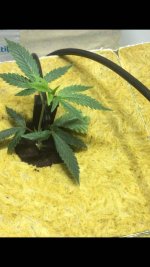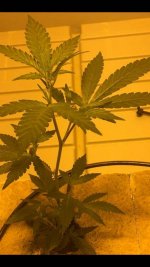Beta Test Team
Member
FAR-RED:
In terms of not adding extra far-red I was referring to white light. If you have a LED array, you need to add far-red if it's not already provided by the LEDs.
Read up on "phytochrome photoequilibrium," "phytochrome," "photoperiodism," "red far-red ratio," "shade avoidance reaction," and "Emerson effect" to get a better understanding about use of far-red light by plants.
We want a red:far-red ratio of around 1 to less than 4 for indoor lighting. Sunlight is 1.05 to about 1.2 in the day, and about 0.6 to 0.8 at sunrise and sunset.
For PPE (aka PPS, "phytochrome photoequilibrium") we want about 0.8 to 0.9, sunlight is about 0.5 to 0.72, except at sunrise and sunset when it's much lower.
UV-B:
What do you mean by "estimated range for UV-B exposure"?
Yes, UV-B should be applied through the entire life cycle. And yes, the same irradiance is fine for vegetative and flowering stages.
Once we carry out our planned research on UV-B and Cannabis we would have more and better info to share.
In terms of not adding extra far-red I was referring to white light. If you have a LED array, you need to add far-red if it's not already provided by the LEDs.
Read up on "phytochrome photoequilibrium," "phytochrome," "photoperiodism," "red far-red ratio," "shade avoidance reaction," and "Emerson effect" to get a better understanding about use of far-red light by plants.
We want a red:far-red ratio of around 1 to less than 4 for indoor lighting. Sunlight is 1.05 to about 1.2 in the day, and about 0.6 to 0.8 at sunrise and sunset.
For PPE (aka PPS, "phytochrome photoequilibrium") we want about 0.8 to 0.9, sunlight is about 0.5 to 0.72, except at sunrise and sunset when it's much lower.
UV-B:
What do you mean by "estimated range for UV-B exposure"?
Yes, UV-B should be applied through the entire life cycle. And yes, the same irradiance is fine for vegetative and flowering stages.
Once we carry out our planned research on UV-B and Cannabis we would have more and better info to share.





